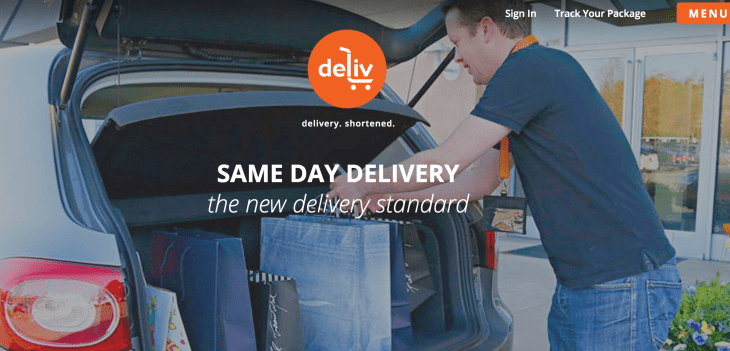With competition between same-day delivery startups as fierce as it’s ever been, every win counts. And today, Deliv, a three-year-old, 50-person, Menlo Park, Ca.-based startup, is putting one on the board with a new same-day prescription delivery deal with Walgreen’s.
Right now, the service is relegated to Dallas, which has 67 store locations that will deliver prescription orders to customers for a $5 fee. But Deliv founder and CEO Daphne Carmeli says she expects the contract to expand quickly, as have Deliv’s arrangements with Macy’s, Williams-Sonoma, and other national and regional retailers.
We talked with Carmeli yesterday about Walgreen’s, how Deliv’s driver network operates exactly, and when and whether the company, which has raised $12.5 million so far from investors, will close its next round. Our chat has been edited for length.
TC: There are a lot of venture-backed delivery startups. Remind readers of how Deliv differs from an on-demand delivery company like Postmates.
DC: Our number one differentiator has to do with our business model. We’re not a consumer marketplace. You don’t download an app. Our technology integrates directly [with a] retailer’s checkout page, allowing customers to choose a same-day delivery option.
Why that’s important is we allow retailers to maintain and own that relationship with their customers.
TC: There are similarities, though. For example, both Deliv and Postmates use on-demand workforces to deliver goods.
DC: We’re really like FedEx, except we don’t have capital assets. We don’t own warehouses or planes or trucks. We do have thousands of drivers on our network; they’re 1099 [contractors] who can work up to 20 hours a week and their backgrounds vary by market. In L.A., we have a lot of playwrights and actors. In the Bay Area, we have a lot of realtors and accountants and grad students.
About 82 percent have some other full-time thing they do, including drive with other on-demand companies, to which we’re completely complementary. Ride sharing peaks during morning and late-afternoon commute times; meanwhile, our peak delivery time is between 10 a.m. and 4 p.m., when there’s a lull.
TC: But you’re delivering things when people are home, correct? Or at least, you’re scheduling these deliveries to accommodate their schedules.
DC: When you buy something on Macys.com or BestBuy.com and you choose same-day delivery, you schedule a window. How long [that window] is depends on the retailer. It could be an hour or two hours. It could be on-demand. The real value is predictability over speed. People want to avoid that yellow sticky [note], telling them they’ve missed their package.
TC: Can people track their packages as they can with FedEx? Also, do your drivers just use Google Maps or the rough equivalent?
DC: When an order gets placed, you can track your package and your driver.
And we’re leveraging everything public for [mapping] information, but we have our own route optimization engine, so instead of either fill up a truck that does deliveries all day or use a truck that picks up and delivers, picks up and delivers, we can [be more dynamic] based on when and where people are buying things and whether they change their scheduled delivery time.
TC: In how many cities are you currently operating?
DC: We’re in 17 markets across the country. Forty-five days ago, we were in eight.
TC: Walgreen’s is charging a $5 fee for its new same-day prescription delivery service. Who collects what in that scenario? How do you charge your retail customers?
DC: Broadly speaking, we charge retailers per delivery. What they pass on to customers is up to them. What we charge them is equivalent to what they would otherwise pay for ground shipping.
The beauty of our business is that we’re not spending money on customer acquisition. I don’t have to find people who are buying stuff. I’m right on your checkout page.
TC: You closed your Series A round in February of last year. Is it safe to assume you’re talking again with investors?
DC: We’ve raised $12.5 million to date. As for our next round, we’re not announcing anything right now.
